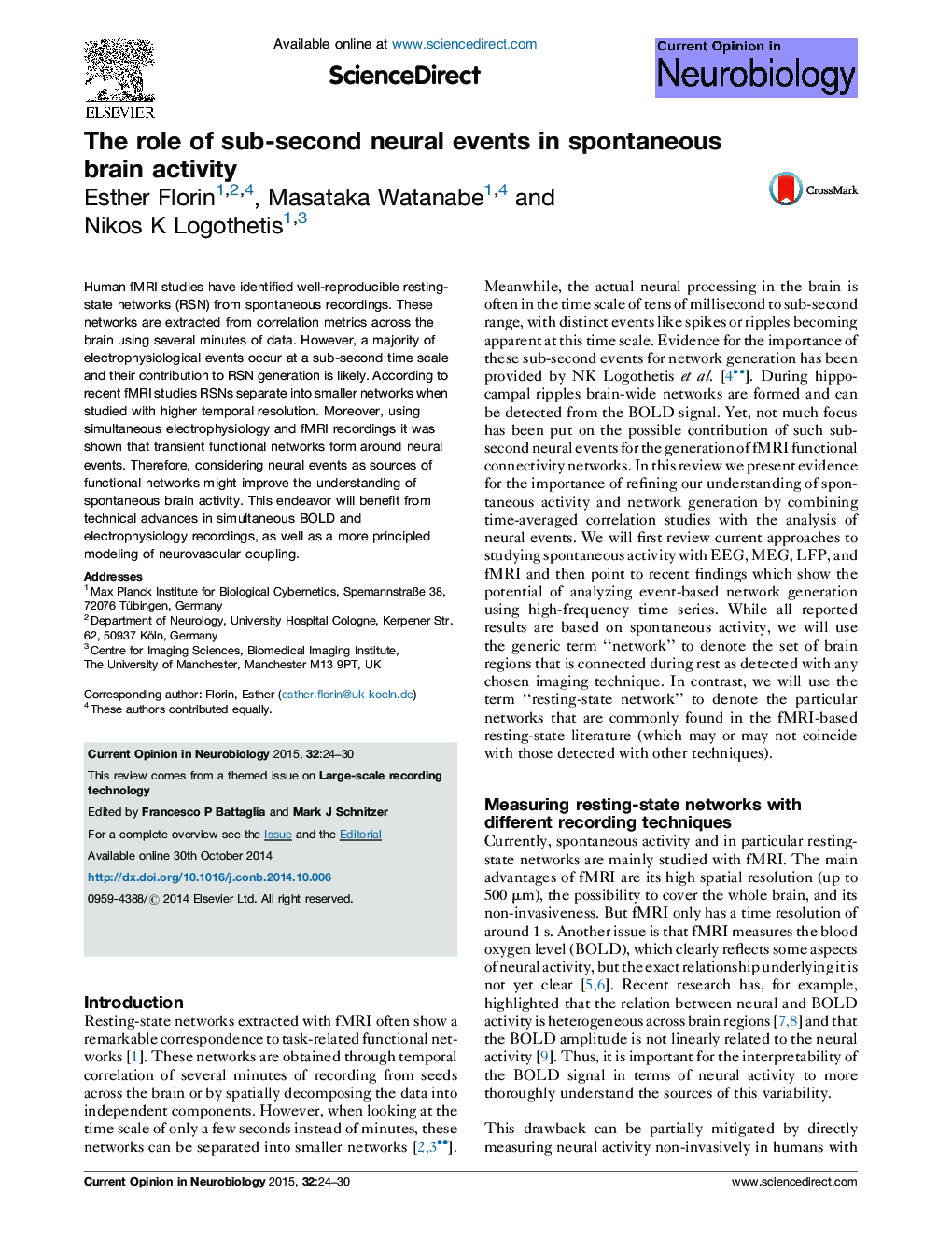| Article ID | Journal | Published Year | Pages | File Type |
|---|---|---|---|---|
| 6266307 | Current Opinion in Neurobiology | 2015 | 7 Pages |
â¢fMRI resting state networks differ from networks obtained using a higher time-resolution.â¢In short time-windows, resting state networks segregate into smaller networks.â¢Sub-second neural events are important for network generation.â¢Multi-modal analysis can provide further insights into network generation.
Human fMRI studies have identified well-reproducible resting-state networks (RSN) from spontaneous recordings. These networks are extracted from correlation metrics across the brain using several minutes of data. However, a majority of electrophysiological events occur at a sub-second time scale and their contribution to RSN generation is likely. According to recent fMRI studies RSNs separate into smaller networks when studied with higher temporal resolution. Moreover, using simultaneous electrophysiology and fMRI recordings it was shown that transient functional networks form around neural events. Therefore, considering neural events as sources of functional networks might improve the understanding of spontaneous brain activity. This endeavor will benefit from technical advances in simultaneous BOLD and electrophysiology recordings, as well as a more principled modeling of neurovascular coupling.
